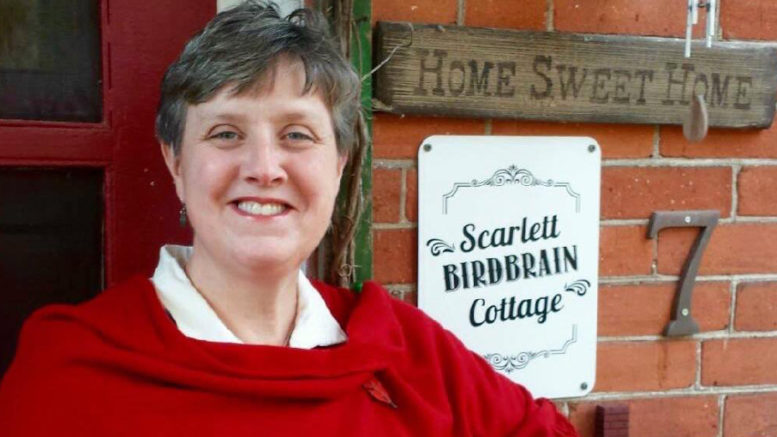Laurie Snider
Notes from the Nest
For the better part of a week now, I’ve been coughing and hacking with a throat that feels like I swallowed a too-hot potato. Alternating between febrile fits and bone-shuddering chills, I’ve been relegated to bed with a self-imposed quarantine, lest I inadvertently pass on the “Napanee Crud,” beyond these walls.
It tends to be times like this, when I’ve fallen ill, that I truly develop an appreciation for life’s smaller pleasures. Clean, soft, flannel sheets, a few fluffy pillows, some good reading material; nothing too brash or overly stimulating, are a few of the necessities. Perhaps the most important elixir in the medicine chest, besides Advil and Tylenol though, is a fragrant, steaming cup of tea.
A popular folktale tells that in 2737 B.C., while servants were purifying water for Emperor Shen Nong of China to drink, some leaves from a nearby tea-bush fell into the bubbling brew. They served it. He loved it and a brand-new refreshment was born. It wasn’t until several centuries later, that tea made its way west.
In 1606, the Dutch were the first to ship tea commercially and from there it eventually made its way into other European countries. Tea was first introduced to England in 1662, when Catherine of Braganza of Portugal, married Charles 11 and it was included in her dowry. Tea was exceptionally expensive and only sold in coffee houses, which only allowed men. In 1717, the Twinings family opened the first teashop, allowing women to savor a cup as well. The shop remains open to this day.
Well into the 18th century, tea continued to be highly taxed and exceedingly valuable. It was kept in elegant boxes with locks, called tea caddies. The high cost led to a booming illegal trade. During one particular period, more tea was smuggled illegally into Britain, than actually imported. Demand was so high, that these unscrupulous characters began compromising the purity and mixing it with additives and less then desirable fillers, such as twigs, saw dust, iron filings and even sheep dung. That must have tasted really baaa-d!
Our American neighbours, at least in part, have tea to thank for their independence. In the fall of 1773, three ships from Britain loaded with tea and heavily taxed, arrived in Boston harbor. The American colonists, who were more than a little annoyed with the tariffs, refused to let the tea be unloaded or the ships leave the harbor with it. On Dec. 16, a band of men stormed the ships and threw an impromptu Tea Party, by tossing the entire cargo overboard.
The British government retaliated, passing the punitive Intolerable Acts, including closing the Boston port. This only ‘tea-d off’ the colonists further, causing them to organize and eventually leading to the American Revolution and at least temporarily, making coffee the beverage of choice in America.
The tea plant, Camellia sinensis, is responsible for several different types of tea, depending on how the leaves of it are treated after harvesting.
Black tea, is the most common and represents 84 per cent of all the tea consumed world-wide. The leaves are left to ferment until they turn black, before being dried and then packaged. Oolong tea, is similar but each stage of processing is shortened. White tea, is the least processed. It’s made from younger leaves, left briefly in the sun to dry. Green tea, is not fermented. Its leaves are either steamed or pan-fried. It’s also known as a superfood and is full of flavonoids and catechins which offer anti-viral, anti-bacterial and even anti-cancer properties.
Darjeeling, is also known as the champagne of teas. It’s only grown in an area of India, at the foot of the Himalayas, about 70 square miles. A pound of it can cost hundreds of dollars, although cheaper products that are only blends are available. Selling Darjeeling, requires a license from the Tea Board of India.
Afternoon tea didn’t appear in Britain until around 1840, when Anna the Duchess of Bedford became a little peckish, at around 4 p.m. Seems she couldn’t wait for dinner at 8pm and ordered up a pot of tea and a few sandwiches and cakes to go with it. Apparently, she wasn’t the only one feeling famished. It caught on with her friends, one of whom was Queen Victoria and low, a new tradition was born.
So, what about peppermint, hibiscus, ginger and cranberry or other herbal concoctions? Well it turns out they’re really infusions or tisanes and not really teas at all. Although Peter Rabbit was certainly revived by a cup of Chamomile tea, after a wayward trip in Mr. McGregor’s garden! Well, just like Peter I find there’s nothing quite so remedying, as a consoling cup of tea. Somehow, it just makes everything seem better.

